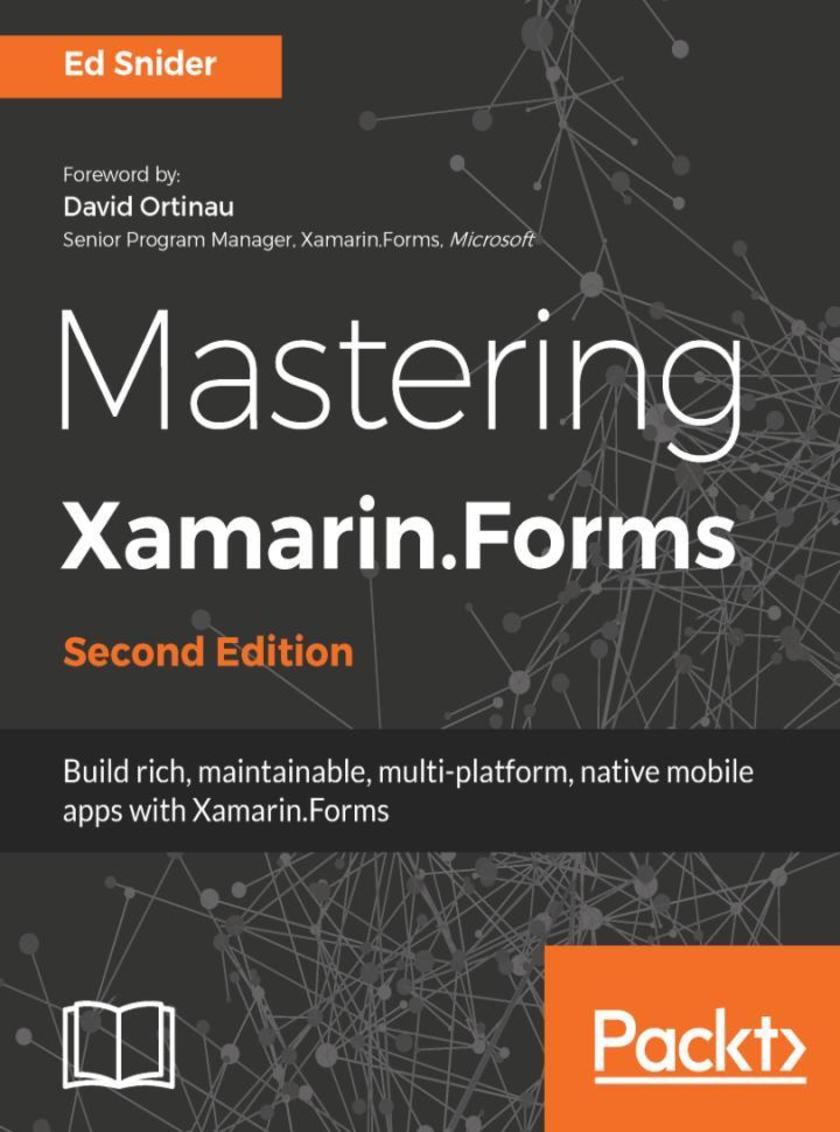
Mastering Xamarin.Forms - Second Edition
¥54.49
Create high-quality multi-platform native apps with Xamarin.Forms About This Book ? Packed with real-world scenarios and solutions to help you build professional-grade mobile apps with Xamarin.Forms ? Build an effective mobile app architecture with the Xamarin.Forms toolkit ? Find out how, when, and why you should use architectural patterns and get best practices with Xamarin.Forms Who This Book Is For This book is intended for C# developers who are familiar with the Xamarin platform and the Xamarin.Forms toolkit. If you have already started working with Xamarin.Forms and want to take your app to the next level with higher quality, maintainability, testability, and flexibility, then this book is for you. What You Will Learn ? Implement the Model-View-View-Model (MVVM) pattern and data-binding in Xamarin.Forms mobile apps ? Extend the Xamarin.Forms navigation API with a custom ViewModel-centric navigation service ? Leverage the inversion of control and dependency injection patterns in Xamarin.Forms mobile apps ? Work with online and offline data in Xamarin.Forms mobile apps ? Test business logic in Xamarin.Forms mobile apps ? Use platform-specific APIs to build rich custom user interfaces in Xamarin.Forms mobile apps ? Explore how to improve mobile app quality using Visual Studio AppCenter In Detail Discover how to extend and build upon the components of the Xamarin.Forms toolkit to develop an effective, robust mobile app architecture. Starting with an app built with the basics of the Xamarin.Forms toolkit, you'll go step by step through several advanced topics to create a solution architecture rich with the benefits of good design patterns and best practices. You'll start by introducing a core separation between the app's user interface and its business logic by applying the MVVM pattern and data-binding. Then you focus on building out a layer of plugin-like services that handle platform-specific utilities such as navigation and geo-location, and on how to loosely use these services in the app with inversion of control and dependency injection. Next you connect the app to a live web-based API and set up offline synchronization. Then, you delve into testing the app logic through unit tests. Finally, you set up Visual Studio App Center for monitoring usage and bugs to gain a proactive edge on app quality. Style and approach This easy-to-follow, code-rich guide will walk you through building a real-world Xamarin.Forms mobile app from start to finish. Each chapter builds on the app by applying new advanced capabilities, design patterns, and best practices. Packed with real-world scenarios, this step-by-step guide will help you quickly build professional-grade apps with Xamarin.Forms.
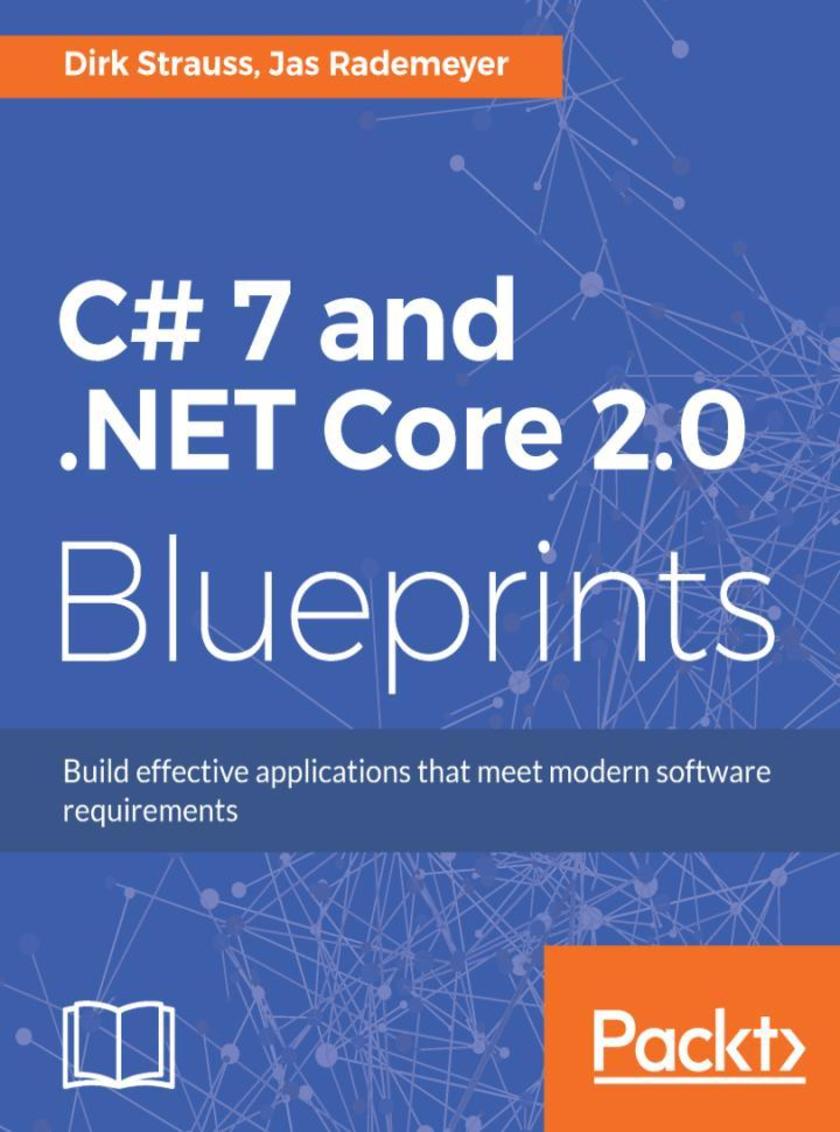
C# 7 and .NET Core 2.0 Blueprints
¥90.46
Leverage the features of C# 7 and .NET core 2.0 to build real-world .NET core applications About This Book ? See how to incorporate Entity Framework Core to build ASP .NET core MVC application ? Get hands-on SignalR and NuGet packages ? Work with Reactive Extensions (Rx.Net) using the elasticsearch tool ? Get hands-on with .NET Core MVC, Middleware, Controllers, Views, Layouts, Routing, and authentication ? Implement Azure Service Fabric and Microservices and AWS, S3,Serverless computing ? Work on .NET Core cross-platform functionality ? Run a .NET Core MVC application with Docker compose ? Easy-to-follow real-world projects that get you up and running with the new features of C# 7 and .NET Core 2.0 ? The practical applications will assist you with concepts such as Entity Framework Core, serverless computing, microservices, and more in .NET Core 2.0 ? Explore the workings of Rx.Net and build cross-platform mobile applications using Xamarin Who This Book Is For This book is for .NET developers who would like to master and implement C# 7 and .NET Core 2.0 with practical projects. Basic knowledge of .NET Core and C# is assumed. What You Will Learn ? How to incorporate Entity Framework Core to build ASP .NET Core MVC applications ? Get hands-on experience with SignalR, and NuGet packages ? Working with MongoDB in your ASP.NET Core MVC application ? Get hands-on experience with .NET Core MVC, Middleware, Controllers, Views, Layouts, Routing, and OAuth ? Implementing Azure Functions and learn what Serverless computing means ? See how .NET Core enables cross-platform applications that run on Windows, macOS and Linux ? Running a .NET Core MVC application with Docker Compose In Detail NET Core is a general purpose, modular, cross-platform, and open source implementation of .NET. With the latest release of .NET Core, many more APIs are expected to show up, which will make APIs consistent across .Net Framework, .NET Core, and Xamarin. This step-by-step guide will teach you the essential .NET Core and C# concepts with the help of real-world projects. The book starts with a brief introduction to the latest features of C# 7 and .NET Core 2.0 before moving on to explain how C# 7 can be implemented using the object-oriented paradigm. You'll learn to work with relational data using Entity Framework and see how to use ASP.NET Core practically. This book will show you how .NET Core allows the creations of cross-platform applications. You'll also learn about SignalR to add real-time functionality to your application. Then you will see how to use MongoDB and how to implement MongoDB into your applications. You'll learn about serverless computing and OAuth concepts, along with running ASP.NET Core applications with Docker Compose. This project-based guide uses practical applications to demonstrate these concepts. By the end of the book, you'll be profcient in developing applications using .NET Core 2.0 Style and approach This comprehensive guide uses 11 real-world practical projects to implement .NET Core and C# concepts step by step.
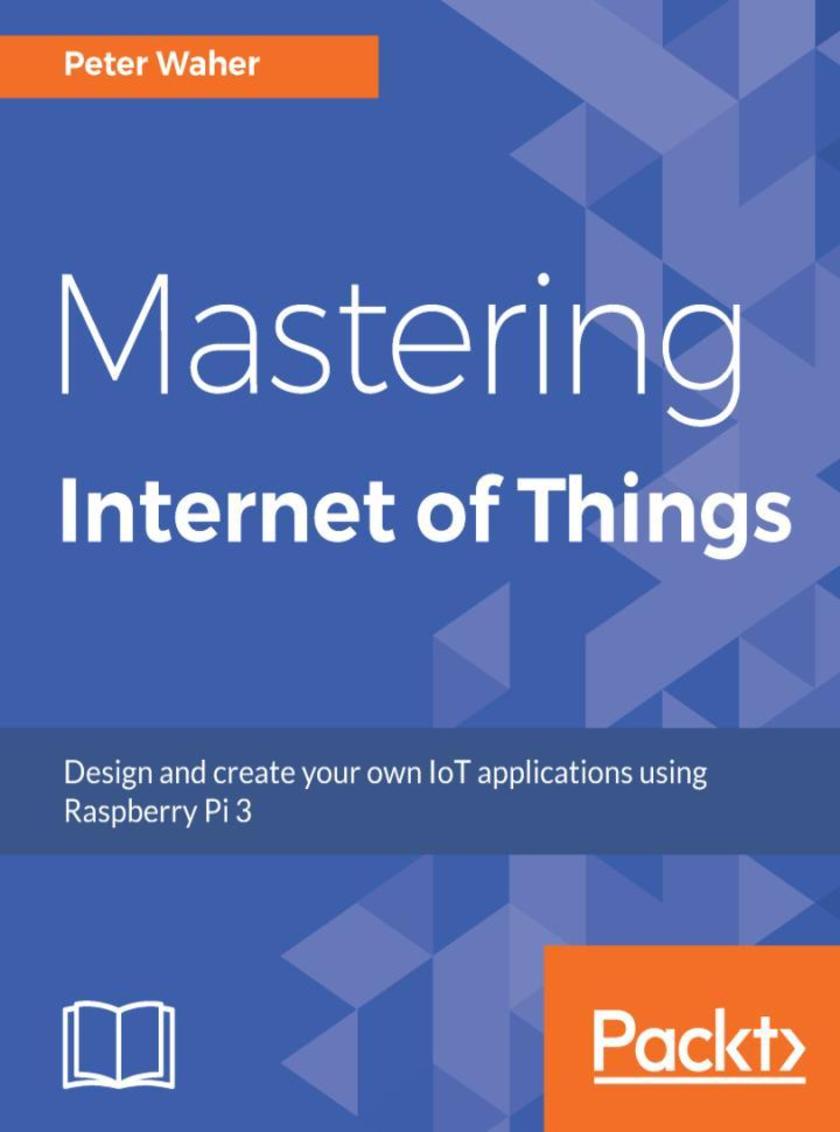
Mastering Internet of Things
¥81.74
Augment your IoT skills with the help of engaging and enlightening tutorials designed for Raspberry Pi 3 About This Book ? Design and implement state-of-the-art solutions for the Internet of Things ? Build complex projects using motions detectors, controllers, sensors, and Raspberry Pi 3 ? A hands-on guide that provides interoperable solutions for sensors, actuators, and controllers Who This Book Is For If you're a developer or electronic engineer and are curious about the Internet of Things, this is the book for you. With only a rudimentary understanding of electronics and Raspberry Pi 3, and some programming experience using managed code, such as C# or Java, you will be taught to develop state-of-the-art solutions for the Internet of Things. What You Will Learn ? Create your own project, run and debug it ? Master different communication patterns using the MQTT, HTTP, CoAP, LWM2M and XMPP protocols ? Build trust-based as hoc networks for open, secure and interoperable communication ? Explore the IoT Service Platform ? Manage the entire product life cycle of devices ? Understand and set up the security and privacy features required for your system ? Master interoperability, and how it is solved in the realms of HTTP,CoAP, LWM2M and XMPP In Detail The Internet of Things (IoT) is the fastest growing technology market. Industries are embracing IoT technologies to improve operational expenses, product life, and people's well-being. Mastering Internet of Things starts by presenting IoT fundamentals and the smart city. You will learn the important technologies and protocols that are used for the Internet of Things, their features, corresponding security implications, and practical examples on how to use them. This book focuses on creating applications and services for the Internet of Things. Further, you will learn to create applications and services for the Internet of Things. You will be discover various interesting projects and understand how to publish sensor data, control devices, and react to asynchronous events using the XMPP protocol. The book also introduces chat, to interact with your devices. You will learn how to automate your tasks by using Internet of Things Service Platforms as the base for an application. You will understand the subject of privacy, requirements they should be familiar with, and how to avoid violating any of the important new regulations being introduced. At the end of the book, you will have mastered creating open, interoperable and secure networks of things, protecting the privacy and integrity of your users and their information. Style and approach This mastering-level guide will immerse you in the advanced functionalities of IoT, along with extending them, and finishes up with security and privacy techniques.

Rust High Performance
¥81.74
Find bottlenecks, identify the proper algorithm to use, optimize performance, and create really efficient Rust applications About This Book ? Understand common performance pitfalls and improve the performance of your applications. ? Get to grips with parallel programming and multithreading with Rust. ? Learn metaprogramming in Rust. Who This Book Is For This book is for Rust developers keen to improve the speed of their code or simply to take their skills to the next level. What You Will Learn ? Master tips and tricks to make your code faster. ? Learn how to identify bottlenecks in your Rust applications ? Discover how to profile your Rust software. ? Understand the type system to create compile-time optimizations. ? Master the borrow checker . ? Learn metaprogramming in Rust to avoid boilerplate code. ? Discover multithreading and work stealing in Rust. ? Understand asynchronous programming in Rust. In Detail At times, it is difficult to get the best performance out of Rust. This book teaches you to optimize the speed of your Rust code to the level of languages such as C/C++. You'll understand and fix common pitfalls, learn how to improve your productivity by using metaprogramming, and speed up your code by concurrently executing parts of it safely and easily. You will master the features of the language which will make you stand out and use them to really improve the efficiency of your algorithms The book begins with a gentle introduction to help you identify bottlenecks when programming in Rust. We highlight common performance pitfalls, along with strategies to detect and resolve these issues early. We move on to mastering Rust's type system, which will enable us to create impressive optimizations in both performance and safety at compile time. You will then learn how to effectively manage memory in Rust, mastering the borrow checker. We move on to measuring performance and you will see how this affects the way you write code. Moving ahead, you will perform metaprogramming in Rust to boost the performance of your code and your productivity. You will finally learn parallel programming in Rust, which enables efficient and faster execution by using multithreading and asynchronous programming. Style and approach You'll embark on a learning journey that will teach about you deep-core concepts in the Rust language. Learning those concepts—such as understanding the borrow checker—will make you competent to write more efficient Rust code. To learn those core concepts, you'll perform practical work and see for yourself how specific patterns improve the performance of your code.

TensorFlow Deep Learning Projects
¥73.02
Leverage the power of Tensorflow to design deep learning systems for a variety of real-world scenarios About This Book ? Build efficient deep learning pipelines using the popular Tensorflow framework ? Train neural networks such as ConvNets, generative models, and LSTMs ? Includes projects related to Computer Vision, stock prediction, chatbots and more Who This Book Is For This book is for data scientists, machine learning developers as well as deep learning practitioners, who want to build interesting deep learning projects that leverage the power of Tensorflow. Some understanding of machine learning and deep learning, and familiarity with the TensorFlow framework is all you need to get started with this book. What You Will Learn ? Set up the TensorFlow environment for deep learning ? Construct your own ConvNets for effective image processing ? Use LSTMs for image caption generation ? Forecast stock prediction accurately with an LSTM architecture ? Learn what semantic matching is by detecting duplicate Quora questions ? Set up an AWS instance with TensorFlow to train GANs ? Train and set up a chatbot to understand and interpret human input ? Build an AI capable of playing a video game by itself –and win it! In Detail TensorFlow is one of the most popular frameworks used for machine learning and, more recently, deep learning. It provides a fast and efficient framework for training different kinds of deep learning models, with very high accuracy. This book is your guide to master deep learning with TensorFlow with the help of 10 real-world projects. TensorFlow Deep Learning Projects starts with setting up the right TensorFlow environment for deep learning. Learn to train different types of deep learning models using TensorFlow, including Convolutional Neural Networks, Recurrent Neural Networks, LSTMs, and Generative Adversarial Networks. While doing so, you will build end-to-end deep learning solutions to tackle different real-world problems in image processing, recommendation systems, stock prediction, and building chatbots, to name a few. You will also develop systems that perform machine translation, and use reinforcement learning techniques to play games. By the end of this book, you will have mastered all the concepts of deep learning and their implementation with TensorFlow, and will be able to build and train your own deep learning models with TensorFlow confidently. Style and approach This book contains 10 unique, end-to-end projects covering all aspects of deep learning and their implementations with TensorFlow. Each project will equip you with a unique skillset in training efficient deep learning models, and empower you to implement your own projects more confidently
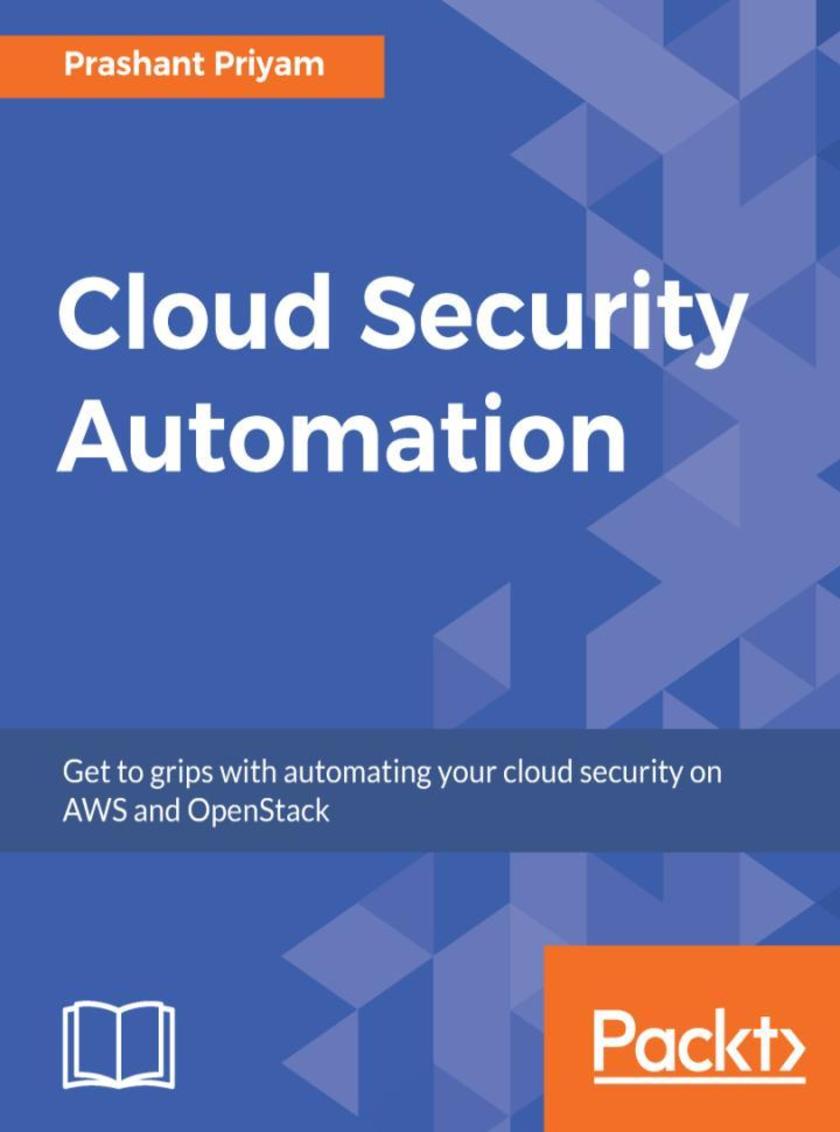
Cloud Security Automation
¥81.74
Secure public and private cloud workloads with this comprehensive learning guide. About This Book ? Take your cloud security functions to the next level by automation ? Learn to automate your security functions on AWS and OpenStack ? Practical approach towards securing your workloads efficiently Who This Book Is For This book is targeted at DevOps Engineers, Security professionals, or any stakeholders responsible for securing cloud workloads. Prior experience with AWS or OpenStack will be an advantage. What You Will Learn ? Define security for public and private cloud services ? Address the security concerns of your cloud ? Understand Identity and Access Management ? Get acquainted with cloud storage and network security ? Improve and optimize public and private cloud security ? Automate cloud security ? Understand the security compliance requirements of your cloud In Detail Security issues are still a major concern for all IT organizations. For many enterprises, the move to cloud computing has raised concerns for security, but when applications are architected with focus on security, cloud platforms can be made just as secure as on-premises platforms. Cloud instances can be kept secure by employing security automation that helps make your data meet your organization's security policy. This book starts with the basics of why cloud security is important and how automation can be the most effective way of controlling cloud security. You will then delve deeper into the AWS cloud environment and its security services by dealing with security functions such as Identity and Access Management and will also learn how these services can be automated. Moving forward, you will come across aspects such as cloud storage and data security, automating cloud deployments, and so on. Then, you'll work with OpenStack security modules and learn how private cloud security functions can be automated for better time- and cost-effectiveness. Toward the end of the book, you will gain an understanding of the security compliance requirements for your Cloud. By the end of this book, you will have hands-on experience of automating your cloud security and governance. Style and approach This book follows a step-by-step, practical approach to help automate and secure your cloud account structure in an Amazon Web Services (AWS) and OpenStack environment.

Data Analysis with R - Second Edition
¥73.02
Learn, by example, the fundamentals of data analysis as well as several intermediate to advanced methods and techniques ranging from classification and regression to Bayesian methods and MCMC, which can be put to immediate use. About This Book ? Analyze your data using R – the most powerful statistical programming language ? Learn how to implement applied statistics using practical use-cases ? Use popular R packages to work with unstructured and structured data Who This Book Is For Budding data scientists and data analysts who are new to the concept of data analysis, or who want to build efficient analytical models in R will find this book to be useful. No prior exposure to data analysis is needed, although a fundamental understanding of the R programming language is required to get the best out of this book. What You Will Learn ? Gain a thorough understanding of statistical reasoning and sampling theory ? Employ hypothesis testing to draw inferences from your data ? Learn Bayesian methods for estimating parameters ? Train regression, classification, and time series models ? Handle missing data gracefully using multiple imputation ? Identify and manage problematic data points ? Learn how to scale your analyses to larger data with Rcpp, data.table, dplyr, and parallelization ? Put best practices into effect to make your job easier and facilitate reproducibility In Detail Frequently the tool of choice for academics, R has spread deep into the private sector and can be found in the production pipelines at some of the most advanced and successful enterprises. The power and domain-specificity of R allows the user to express complex analytics easily, quickly, and succinctly. Starting with the basics of R and statistical reasoning, this book dives into advanced predictive analytics, showing how to apply those techniques to real-world data though with real-world examples. Packed with engaging problems and exercises, this book begins with a review of R and its syntax with packages like Rcpp, ggplot2, and dplyr. From there, get to grips with the fundamentals of applied statistics and build on this knowledge to perform sophisticated and powerful analytics. Solve the difficulties relating to performing data analysis in practice and find solutions to working with messy data, large data, communicating results, and facilitating reproducibility. This book is engineered to be an invaluable resource through many stages of anyone’s career as a data analyst. Style and approach An easy-to-follow step by step guide which will help you get to grips with real world application of Data Analysis with R
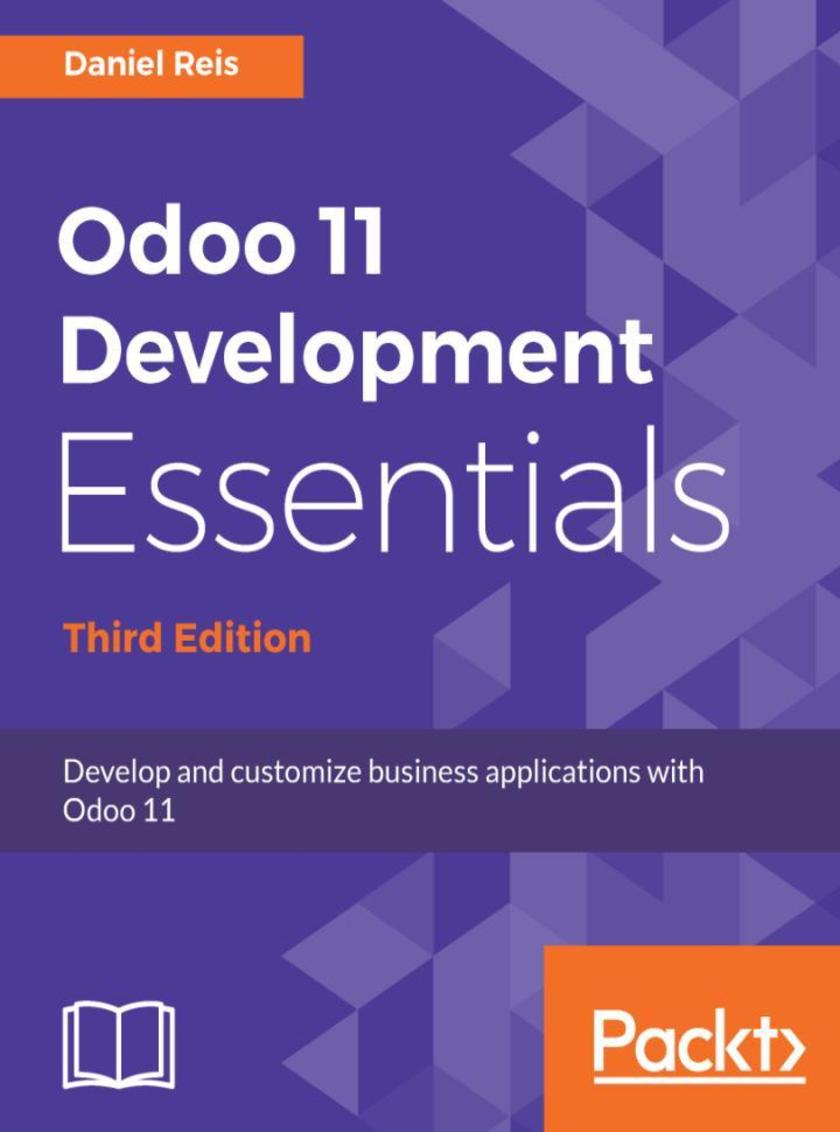
Odoo 11 Development Essentials - Third Edition
¥81.74
Fast track your development skills to build resourceful, open-source business applications with Odoo 11 About This Book ? Discover the latest technical capabilities in Odoo 11 while you build your own app ? Program business logic and manipulate data to implement specific business rules in your applications ? Implement automated tests to add modules and techniques and debug module business logic Who This Book Is For Odoo 11 Development Essentials caters to developers who are familiar with Python and MVC design and now want to build effective business applications using Odoo. What You Will Learn ? Install Odoo from source ? Manage Odoo server instances ? Create a new Odoo application from scratch covering the most frequently used elements ? Develop new models and use inheritance to extend/modify existing models ? Use ORM methods, both in the Odoo server and from external clients ? Create Kanban views using QWeb effectively ? Develop custom web and website CMS pages ? Use external API to integrate Odoo with external applications In Detail Odoo continues to gain worldwide momentum as the best platform for open source ERP installations. Now, with Odoo 11, you have access to an improved GUI, performance optimization, integrated in-app purchase features, and a fast-growing community to help transform and modernize your business. With this practical guide, you will cover all the new features that Odoo 11 has to offer to build and customize business applications, focusing on the publicly available community edition. We begin with setting up a development environment, and as you make your way through the chapters, you will learn to build feature-rich business applications. With the aim of jump-starting your Odoo proficiency level, from no specific knowledge to application development readiness, you will develop your first Odoo application. We then move on to topics such as models and views, and understand how to use server APIs to add business logic, helping to lay a solid foundation for advanced topics. The book concludes with Odoo interactions and how to use the Odoo API from other programs, all of which will enable you to efficiently integrate applications with other external systems. Style and Approach This fast-paced tutorial explains topics with the help of practical examples to help you understand each chapter efficiently.
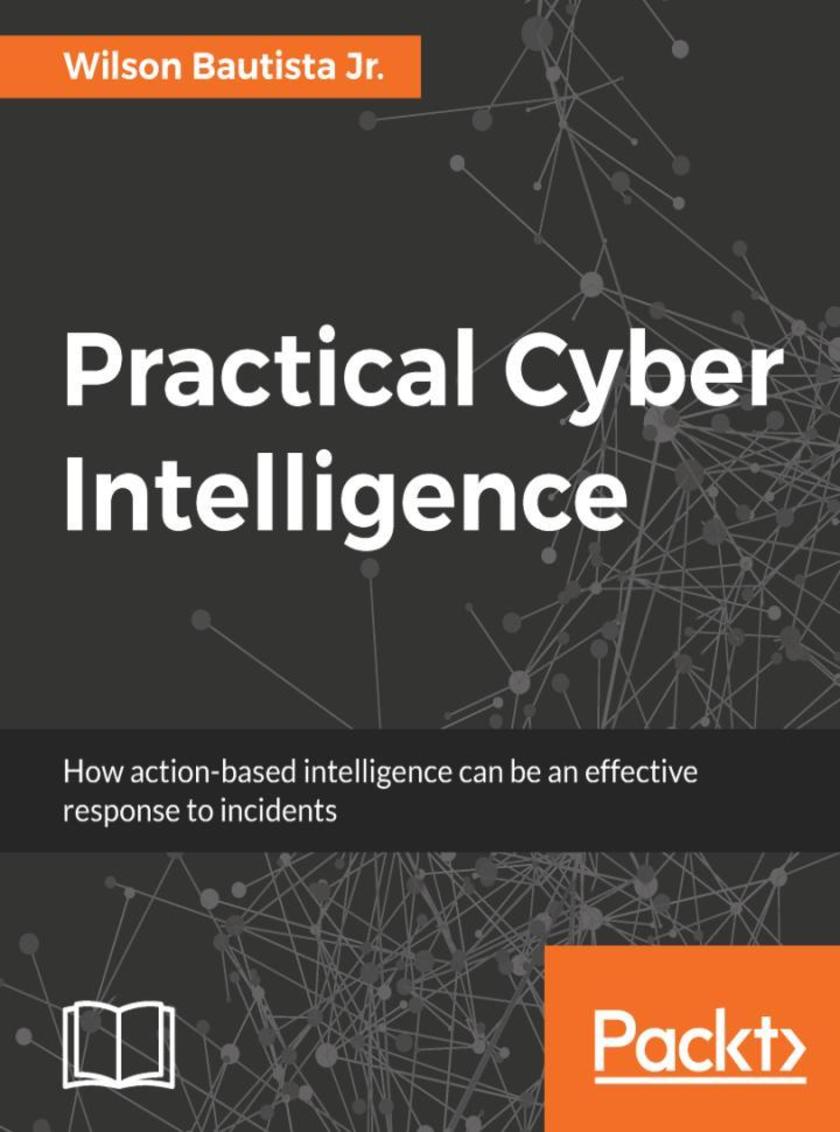
Practical Cyber Intelligence
¥81.74
Your one stop solution to implement a Cyber Defense Intelligence program in to your organisation. About This Book ? Intelligence processes and procedures for response mechanisms ? Master F3EAD to drive processes based on intelligence ? Threat modeling and intelligent frameworks ? Case studies and how to go about building intelligent teams Who This Book Is For This book targets incident managers, malware analysts, reverse engineers, digital forensics specialists, and intelligence analysts; experience in, or knowledge of, security operations, incident responses or investigations is desirable so you can make the most of the subjects presented. What You Will Learn ? Learn about the Observe-Orient-Decide-Act (OODA) loop and it's applicability to security ? Understand tactical view of Active defense concepts and their application in today's threat landscape ? Get acquainted with an operational view of the F3EAD process to drive decision making within an organization ? Create a Framework and Capability Maturity Model that integrates inputs and outputs from key functions in an information security organization ? Understand the idea of communicating with the Potential for Exploitability based on cyber intelligence In Detail Cyber intelligence is the missing link between your cyber defense operation teams, threat intelligence, and IT operations to provide your organization with a full spectrum of defensive capabilities. This book kicks off with the need for cyber intelligence and why it is required in terms of a defensive framework. Moving forward, the book provides a practical explanation of the F3EAD protocol with the help of examples. Furthermore, we learn how to go about threat models and intelligence products/frameworks and apply them to real-life scenarios. Based on the discussion with the prospective author I would also love to explore the induction of a tool to enhance the marketing feature and functionality of the book. By the end of this book, you will be able to boot up an intelligence program in your organization based on the operation and tactical/strategic spheres of Cyber defense intelligence. Style and approach A step-by-step practical guide that will help you master defensive frameworks to secure your system, and the F3EAD protocol to help you boot up an intelligence program in your organization.
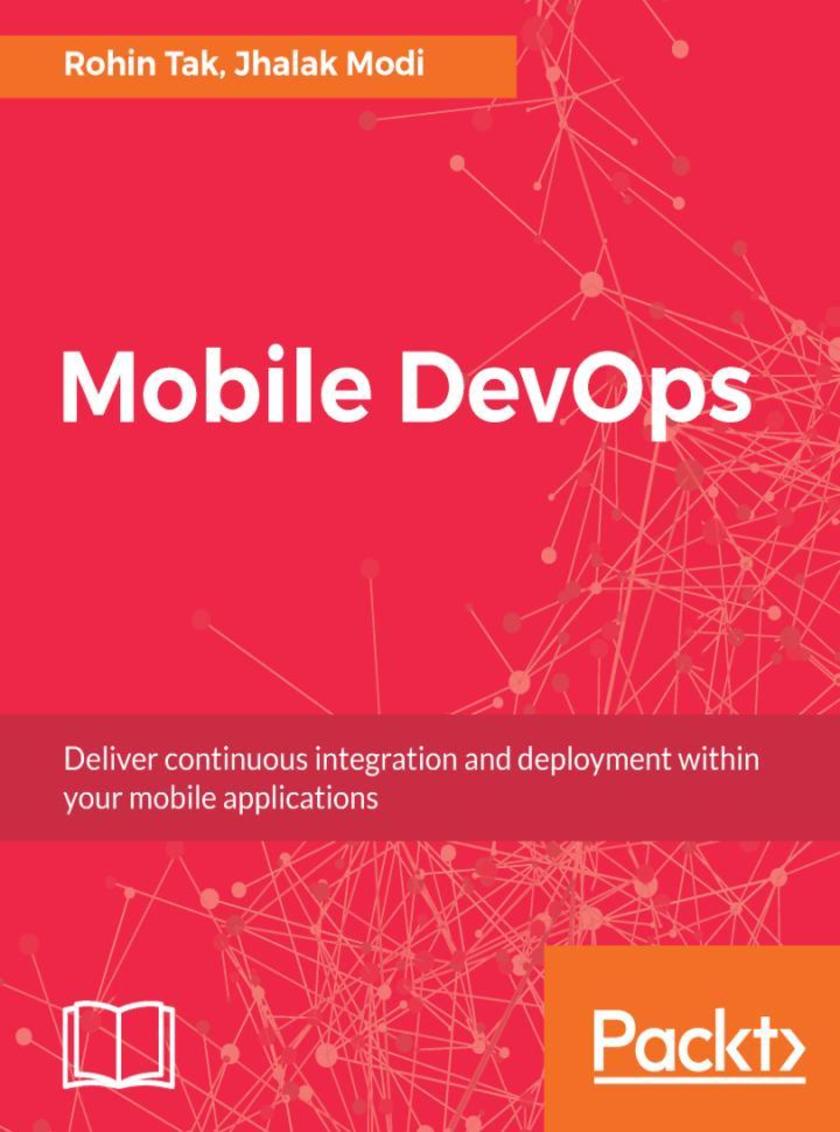
Mobile DevOps
¥81.74
This step-by-step guide will teach you to continuously improve your mobile application development process About This Book ? Efficiently deliver continuous integration and deployment within all the stages of your application's lifecycle ? Learn to implement mobile DevOps with Xamarin and Visual Studio ? Deliver high quality and performing mobile applications Who This Book Is For If you are a programmer and developer who wants to increase the efficiency and scalability of your mobile application with the implementation of DevOps, then this book is for you. You need basic experience of the application process development. What You Will Learn ? Become fluent with the basic components of Mobile Devops ? Find out how to use code repositories and install Git on an EC2 server and manage users and groups ? Set up an Android device for development and install Visual Studio and Xamarin on Windows ? Create an Android project and UI for applications ? Add permissions to Android Manifest ? Write tests with Xamarin. UI and test using test cloud to check it on multiple devices ? Monitor and optimize the application using the Android monitoring tool ? Debug the mobile application and improve its efficiency In Detail Today's world is all about perfection, and there are hundreds of applications that are released each day out of which only a few succeed. Making sure that the app looks, performs, and behaves as expected is one of the biggest challenge developers face today. The main goal of this book is to teach developers to implement DevOps to build, test, and deliver. This book will teach you to implement Mobile DevOps at every stage of your application's lifecycle with Visual Studio and Xamarin Mobile Lifecycle solutions. Later, it will also show you how to leverage Mobile Center's continuous integration and automated testing to develop a high-quality applications. Next, you’ll see how to mobilize your on-premises data to the cloud and increase your productivity with code reuse. Finally, you’ll discover how to find and fix bugs beforehand, improving the efficiency of your application while it is being developed. By the end of this book, you will be well-versed with Mobile DevOps techniques, delivering high quality and high performance mobile apps. Style and approach This clear, concise, and straightforward book will make you aware of mobile applications by showing you Devops fundamentals such as building, testing, and delivery. This book has been created to help you put new ideas into practice, and demonstrate precisely what's possible with mobile Devops.

Learn ARCore - Fundamentals of Google ARCore
¥73.02
Create next-generation Augmented Reality and Mixed Reality apps with the latest version of Google ARCore About This Book ? Harness the power of the Google’s new augmented reality (AR) platform ARCore to build cutting-edge Augmented reality apps ? Learn core concepts of Environmental Understanding, Immersive Computing, and Motion Tracking with ARCore ? Extend your application by combining ARCore with OpenGL, Machine Learning and more. Who This Book Is For This book is for web and mobile developers who have broad programming knowledge on Java or JavaScript or C# and want to develop Augmented Reality applications with Google ArCore. To follow this book no prior experience with AR development, 3D, or 3D math experience is needed. What You Will Learn ? Build and deploy your Augmented Reality app to the Android, Web, and Unity platforms ? Implement ARCore to identify and visualize objects as point clouds, planes, surfaces, and/or meshes ? Explore advanced concepts of environmental understanding using Google ARCore and OpenGL ES with Java ? Create light levels from ARCore and create a C# script to watch and propagate lighting changes in a scene ? Develop graphics shaders that react to changes in lighting and map the environment to place objects in Unity/C# ? Integrate motion tracking with the Web ARCore API and Google Street View to create a combined AR/VR experience In Detail Are you a mobile developer or web developer who wants to create immersive and cool Augmented Reality apps with the latest Google ARCore platform? If so, this book will help you jump right into developing with ARCore and will help you create a step by step AR app easily. This book will teach you how to implement the core features of ARCore starting from the fundamentals of 3D rendering to more advanced concepts such as lighting, shaders, Machine Learning, and others. We’ll begin with the basics of building a project on three platforms: web, Android, and Unity. Next, we’ll go through the ARCore concepts of motion tracking, environmental understanding, and light estimation. For each core concept, you’ll work on a practical project to use and extend the ARCore feature, from learning the basics of 3D rendering and lighting to exploring more advanced concepts. You’ll write custom shaders to light virtual objects in AR, then build a neural network to recognize the environment and explore even grander applications by using ARCore in mixed reality. At the end of the book, you’ll see how to implement motion tracking and environment learning, create animations and sounds, generate virtual characters, and simulate them on your screen. Style and approach Practical examples that will take you through the basics of ARcore and teach you how to build an app using it.
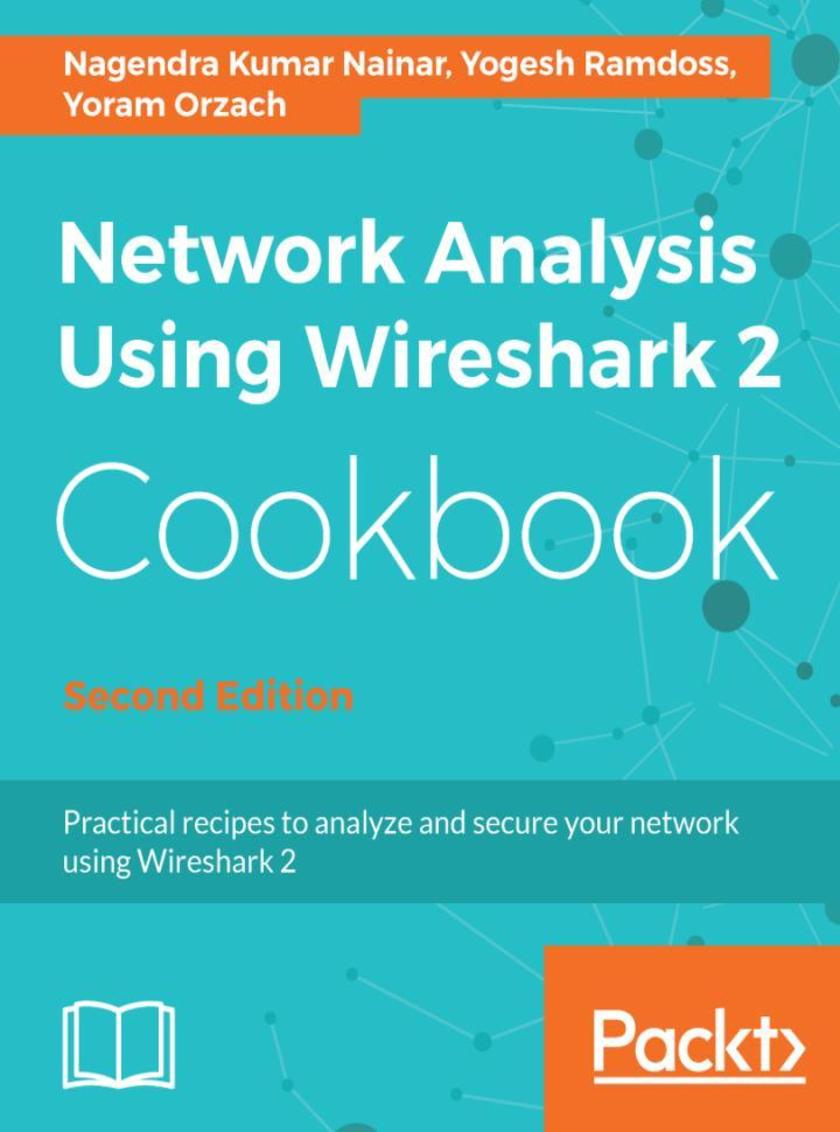
Network Analysis Using Wireshark 2 Cookbook - Second Edition
¥90.46
Over 100 recipes to analyze and troubleshoot network problems using Wireshark 2 About This Book ? Place Wireshark 2 in your network and configure it for effective network analysis ? Deep dive into the enhanced functionalities of Wireshark 2 and protect your network with ease ? A practical guide with exciting recipes on a widely used network protocol analyzer Who This Book Is For This book is for security professionals, network administrators, R&D, engineering and technical support, and communications managers who are using Wireshark for network analysis and troubleshooting. It requires a basic understanding of networking concepts, but does not require specific and detailed technical knowledge of protocols or vendor implementations. What You Will Learn ? Configure Wireshark 2 for effective network analysis and troubleshooting ? Set up various display and capture filters ? Understand networking layers, including IPv4 and IPv6 analysis ? Explore performance issues in TCP/IP ? Get to know about Wi-Fi testing and how to resolve problems related to wireless LANs ? Get information about network phenomena, events, and errors ? Locate faults in detecting security failures and breaches in networks In Detail This book contains practical recipes on troubleshooting a data communications network. This second version of the book focuses on Wireshark 2, which has already gained a lot of traction due to the enhanced features that it offers to users. The book expands on some of the subjects explored in the first version, including TCP performance, network security, Wireless LAN, and how to use Wireshark for cloud and virtual system monitoring. You will learn how to analyze end-to-end IPv4 and IPv6 connectivity failures for Unicast and Multicast traffic using Wireshark. It also includes Wireshark capture files so that you can practice what you’ve learned in the book. You will understand the normal operation of E-mail protocols and learn how to use Wireshark for basic analysis and troubleshooting. Using Wireshark, you will be able to resolve and troubleshoot common applications that are used in an enterprise network, like NetBIOS and SMB protocols. Finally, you will also be able to measure network parameters, check for network problems caused by them, and solve them effectively. By the end of this book, you’ll know how to analyze traffic, find patterns of various offending traffic, and secure your network from them. Style and approach This book consists of practical recipes on Wireshark 2 that target novices as well as intermediate Wireshark users. It goes deep into the technical issues, covers additional protocols, and many more real-live examples so that you are able to implement it in your daily life scenarios.
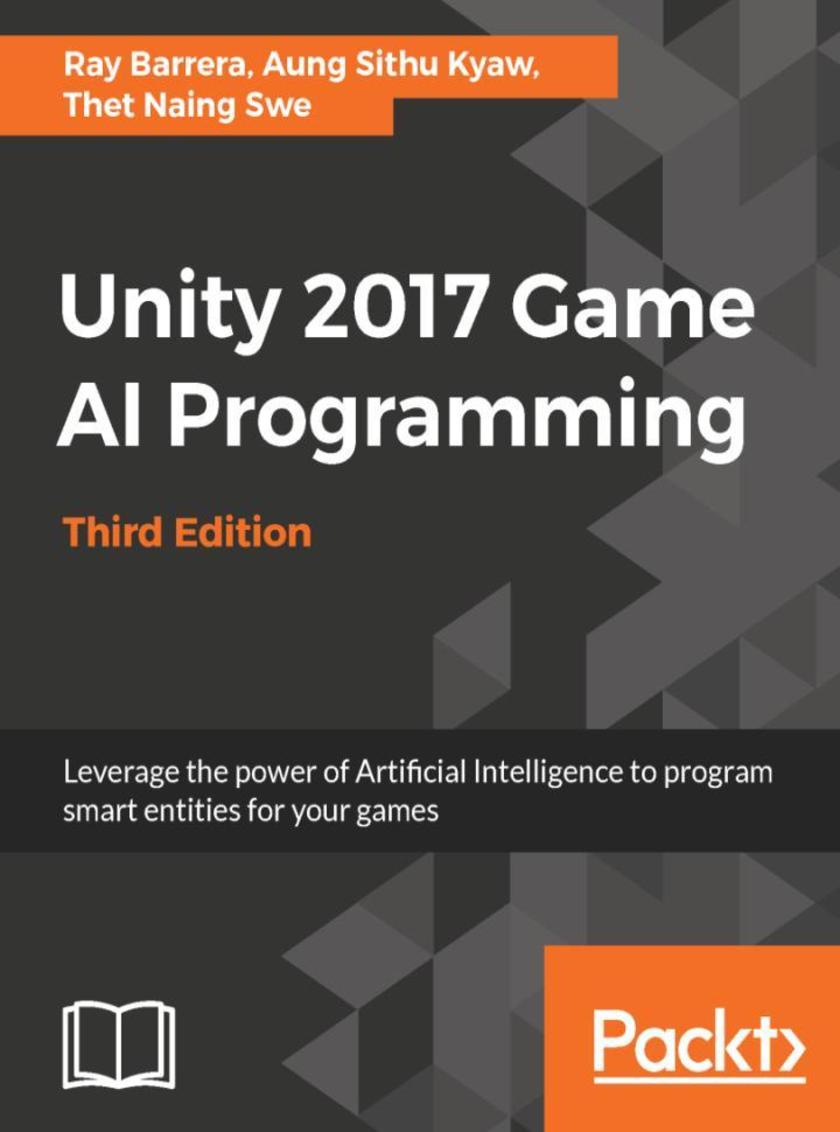
Unity 2017 Game AI Programming - Third Edition
¥90.46
Use Unity 2017 to create fun and unbelievable AI entities in your games with A*, Fuzzy logic and NavMesh About This Book ? Explore the brand-new Unity 2017 features that makes implementing Artificial Intelligence in your game easier than ever ? Use fuzzy logic concepts in your AI decision-making to make your characters more engaging ? Build exciting and richer games by mastering advanced Artificial Intelligence concepts such as Neural Networks Who This Book Is For This book is intended for Unity developers with a basic understanding of C# and the Unity editor. Whether you're looking to build your first game or are looking to expand your knowledge as a game programmer, you will find plenty of exciting information and examples of game AI in terms of concepts and implementation. What You Will Learn ? Understand the basic terminology and concepts in game AI ? Explore advanced AI Concepts such as Neural Networks ? Implement a basic finite state machine using state machine behaviors in Unity 2017 ? Create sensory systems for your AI and couple it with a Finite State Machine ? Wok with Unity 2017's built-in NavMesh features in your game ? Build believable and highly-efficient artificial flocks and crowds ? Create a basic behavior tree to drive a character's actions In Detail Unity 2017 provides game and app developers with a variety of tools to implement Artificial Intelligence. Leveraging these tools via Unity's API or built-in features allows limitless possibilities when it comes to creating your game's worlds and characters. This third edition with Unity will help you break down Artificial Intelligence into simple concepts to give you a fundamental understanding of the topic to build upon. Using a variety of examples, the book then takes those concepts and walks you through actual implementations designed to highlight key concepts, and features related to game AI in Unity 5. Further on you will learn to distinguish the state machine pattern and implement one of your own. This is followed by learning how to implement a basic sensory system for your AI agent and coupling it with a Finite State Machine (FSM). Next you'll learn how to use Unity's built-in NavMesh feature and implement your own A* pathfinding system. You will then learn how to implement simple flocks and crowd's dynamics, key AI concepts. Moving on, you will learn how to implement a behavior tree through a game-focused example. Lastly, you'll combine fuzzy logic concepts with state machines and apply all the concepts in the book to build a simple tank game. Style and approach A self-explanatory practical guide with a series of tips and tricks on creating AI games with ease.
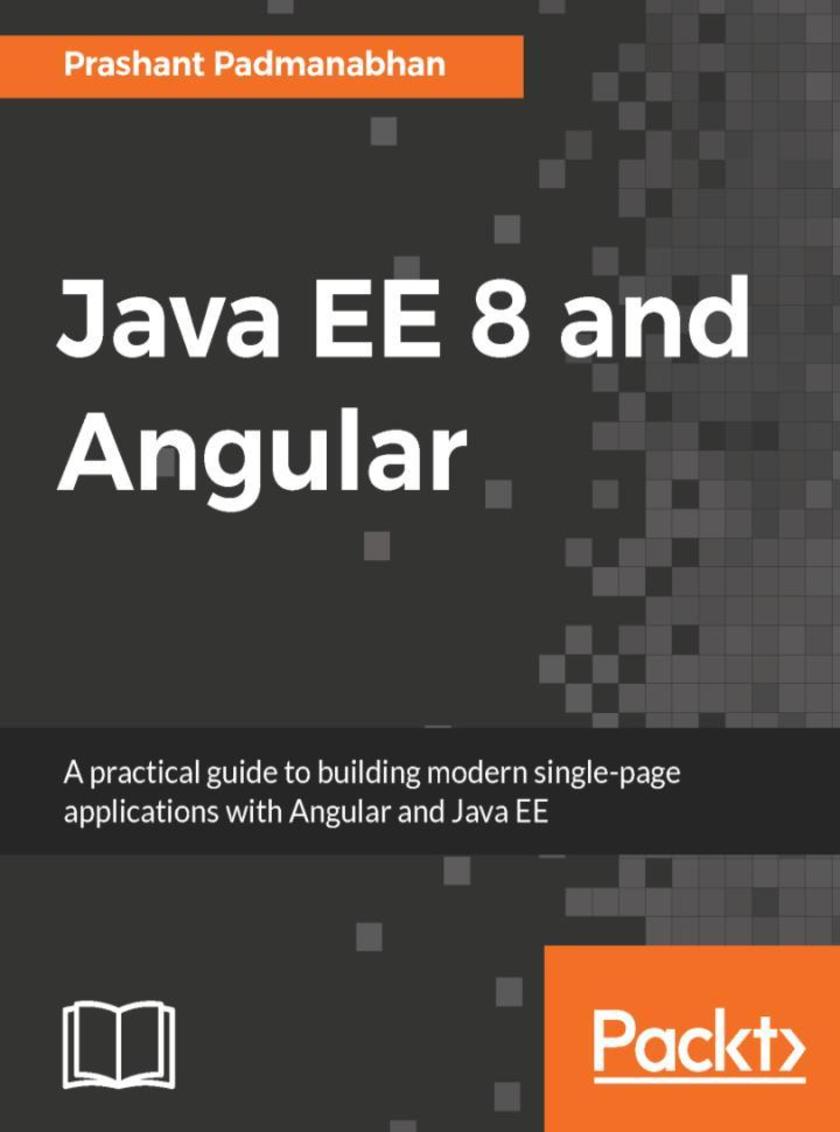
Java EE 8 and Angular
¥81.74
Learn how to build high-performing enterprise applications using Java EE powered by Angular at the frontend About This Book ? Leverage Java EE 8 features to build robust back end for your enterprise applications ? Use Angular to build a single page frontend and combine it with the Java EE backend ? Practical guide filled with ample real-world examples Who This Book Is For This book is for Java EE developers who would like to build modern enterprise web applications using Angular. No prior knowledge of Angular is expected. What You Will Learn ? Write CDI-based code in Java EE 8 applications ? Build an understanding of Microservices and what they mean in Java EE context ? Use Docker to build and run a microservice application ? Use configuration options to work effectively with JSON documents ? Understand asynchronous task handling and writing REST API clients ? Explore the fundamentals of TypeScript, which sets the foundation for working on Angular projects ? Use Angular CLI to add and manage new features ? Use JSON Web tokens to secure Angular applications against malicious attacks In Detail The demand for modern and high performing web enterprise applications is growing rapidly. No more is a basic HTML front-end enough to meet customer demands. This book will be your one stop guide to build outstanding enterprise web applications with Java EE and Angular. It will teach you how to harness the power of Java EE to build sturdy back ends while applying Angular on the front end. Your journey to building excellent web enterprise applications starts here! The book starts with a brief introduction to the fundamentals of Java EE and all the new APIs offered in the latest release. Armed with the knowledge of Java EE 8, you will go over what it’s like to build an end to end application, configure database connection for JPA, and build scalable microservice using RESTful APIs running in docker containers. Taking advantage of Payara Micro capabilities, you will build an Issue Management System, which will have various features exposed as services using Java EE backend. With a detailed coverage of Angular fundamentals, the book will expand the Issue Management System by building a modern single page application frontend. Moving forward you will learn to fit both the pieces together i.e. the frontend Angular application with the backend java EE microservices. As each unit in a microservice promotes high cohesion, you will learn different ways in which independent units can be tested efficiently. Finishing off with concepts on securing your enterprise applications, this book is a hands on guide to building Modern Web Applications. Style and approach This is a step-by-step tutorial that explains to building modern web enterprise applications.
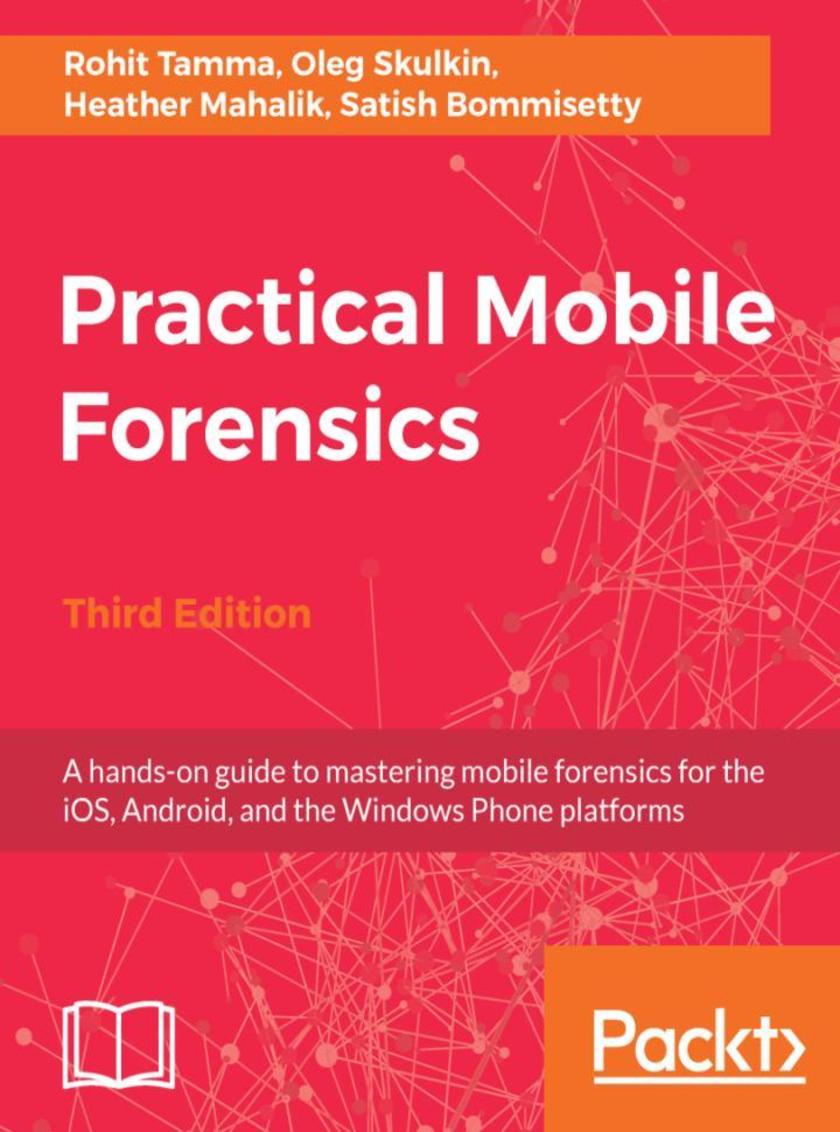
Practical Mobile Forensics - Third Edition
¥81.74
Investigate, analyze, and report iOS, Android, and Windows devices About This Book ? Get hands-on experience in performing simple to complex mobile forensics techniques. ? Retrieve and analyze data stored not only on mobile devices but also through the cloud and other connected mediums. ? A practical guide to leveraging the power of mobile forensics on popular mobile platforms with lots of tips, tricks, and caveats. Who This Book Is For If you are a forensics professional and are eager to widen your forensics skill set to mobile forensics then, this book is for you. Some understanding of digital forensics practices would do wonders. What You Will Learn ? Discover the new techniques in practical mobile forensics ? Understand the architecture and security mechanisms present in iOS and Android platforms ? Identify sensitive files on the iOS and Android platforms ? Set up a forensic environment ? Extract data from the iOS and Android platforms ? Recover data on the iOS and Android platforms ? Understand the forensics of Windows devices ? Explore various third-party application techniques and data recovery techniques In Detail Covering up-to-date mobile platforms, this book will focuses on teaching you the most recent techniques for investigating mobile devices. We delve mobile forensics techniques in iOS 9-11, Android 7-8 devices, and Windows 10. We will demonstrate the latest open source and commercial mobile forensics tools, enabling you to analyze and retrieve data effectively. You will learn how to introspect and retrieve data from the cloud, and document and prepare reports of your investigations. By the end of this book, you will have mastered the current operating systems and the relevant techniques to recover data from mobile devices by leveraging open source solutions. Style and approach This book takes a very practical approach and depicts real-life mobile forensics scenarios with lots of tips and tricks to help you acquire the required forensics skillset for various mobile platforms.

Embedded Linux Development Using Yocto Project Cookbook - Second Edition
¥81.74
Over 79 hands-on recipes for professional embedded Linux developers to optimize and boost their Yocto Project know-how About This Book ? Optimize your Yocto setup to speed up development and debug build issues ? Use what is quickly becoming the standard embedded Linux product builder framework—the Yocto Project ? Recipe-based implementation of best practices to optimize your Linux system Who This Book Is For If you are an embedded Linux developer with the basic knowledge of Yocto Project, this book is an ideal way to broaden your knowledge with recipes for embedded development. What You Will Learn ? Optimize your Yocto Project setup to speed up development and debug build issues ? Use Docker containers to build Yocto Project-based systems ? Take advantage of the user-friendly Toaster web interface to the Yocto Project build system ? Build and debug the Linux kernel and its device trees ? Customize your root filesystem with already-supported and new Yocto packages ? Optimize your production systems by reducing the size of both the Linux kernel and root filesystems ? Explore the mechanisms to increase the root filesystem security ? Understand the open source licensing requirements and how to comply with them when cohabiting with proprietary programs ? Create recipes, and build and run applications in C, C++, Python, Node.js, and Java In Detail The Yocto Project has become the de facto distribution build framework for reliable and robust embedded systems with a reduced time to market. You'll get started by working on a build system where you set up Yocto, create a build directory, and learn how to debug it. Then, you'll explore everything about the BSP layer, from creating a custom layer to debugging device tree issues. In addition to this, you’ll learn how to add a new software layer, packages, data, *s, and configuration files to your system. You will then cover topics based on application development, such as using the Software Development Kit and how to use the Yocto project in various development environments. Toward the end, you will learn how to debug, trace, and profile a running system. This second edition has been updated to include new content based on the latest Yocto release. Style and approach This recipe-based book will guide you through all the development stages of an embedded Linux product design using the Yocto Project.
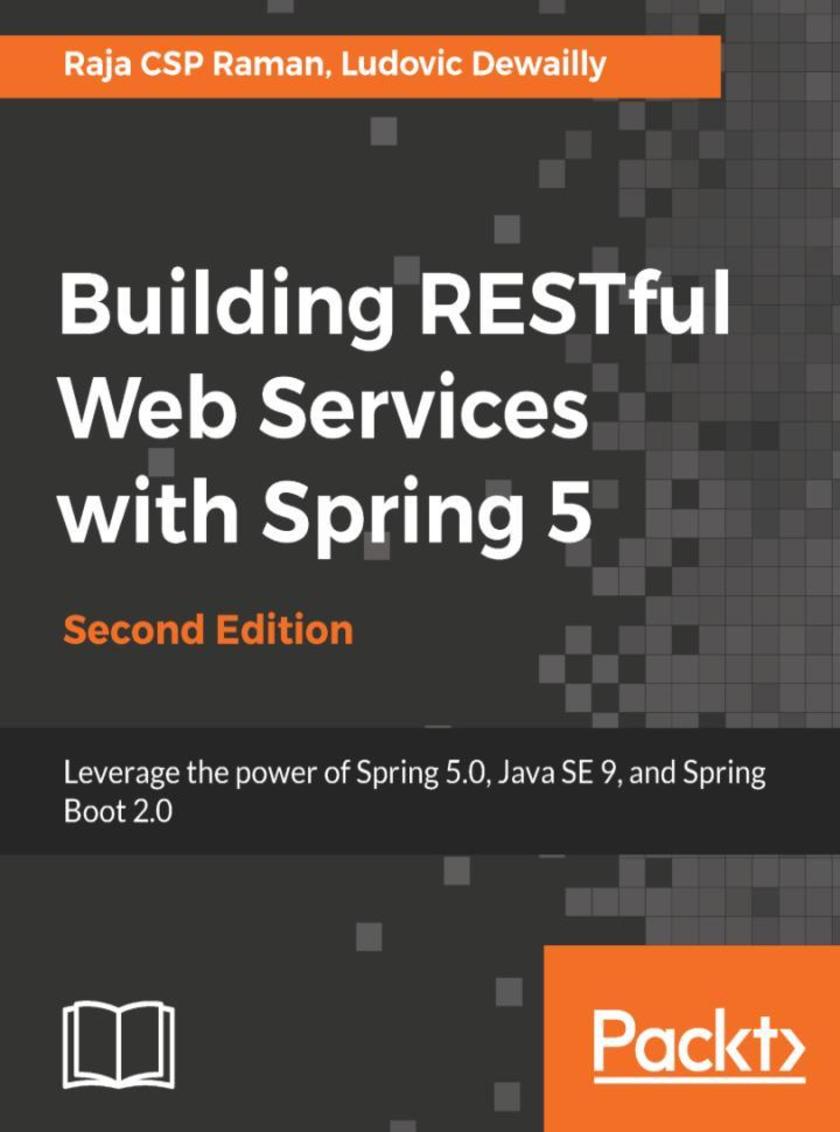
Building RESTful Web Services with Spring 5 - Second Edition
¥81.74
Find out how to implement the REST architecture to build resilient software in Java with the help of the Spring 5.0 framework. About This Book ? Follow best practices and explore techniques such as clustering and caching to achieve a reactive, scalable web service, ? Leverage the Spring Framework to quickly implement RESTful endpoints, ? Learn to implement a client library for a RESTful web service using the Spring Framework along with the new front end framework. Who This Book Is For This book is intended for those who want to learn to build RESTful web services with the latest Spring 5.0 Framework. To make best use of the code samples included in the book, you should have a basic knowledge of the Java language. Previous experience with the Spring Framework would also help you get up and running quickly. What You Will Learn ? Deep dive into the principles behind REST ? Expose CRUD operations through RESTful endpoints with the Spring Framework ? Devise response formats and error handling strategies, offering a consistent and flexible structure to simplify integration for service consumers ? Follow the best approaches for dealing with a service's evolution while maintaining backward compatibility ? Understand techniques to secure web services ? Comply with the best ways to test RESTful web services, including tips for load testing ? Optimise and scale web services using techniques such as caching and clustering In Detail REST is an architectural style that tackles the challenges of building scalable web services. In today's connected world, APIs have taken a central role on the web. APIs provide the fabric through which systems interact, and REST has become synonymous with APIs.The depth, breadth, and ease of use of Spring makes it one of the most attractive frameworks in the Java ecosystem. Marrying the two technologies is therefore a very natural choice.This book takes you through the design of RESTful web services and leverages the Spring Framework to implement these services. Starting from the basics of the philosophy behind REST, you'll go through the steps of designing and implementing an enterprise-grade RESTful web service. Taking a practical approach, each chapter provides code samples that you can apply to your own circumstances.This second edition brings forth the power of the latest Spring 5.0 release, working with MVC built-in as well as the front end framework. It then goes beyond the use of Spring to explores approaches to tackle resilience, security, and scalability concerns. Improve performance of your applications with the new HTTP 2.0 standards. You'll learn techniques to deal with security in Spring and discover how to implement unit and integration test strategies.Finally, the book ends by walking you through building a Java client for your RESTful web service, along with some scaling techniques using the new Spring Reactive libraries. Style and approach Readers will be taken through a set of specific patterns and tested practices to build effective RESTful systems in Java using the Spring framework.
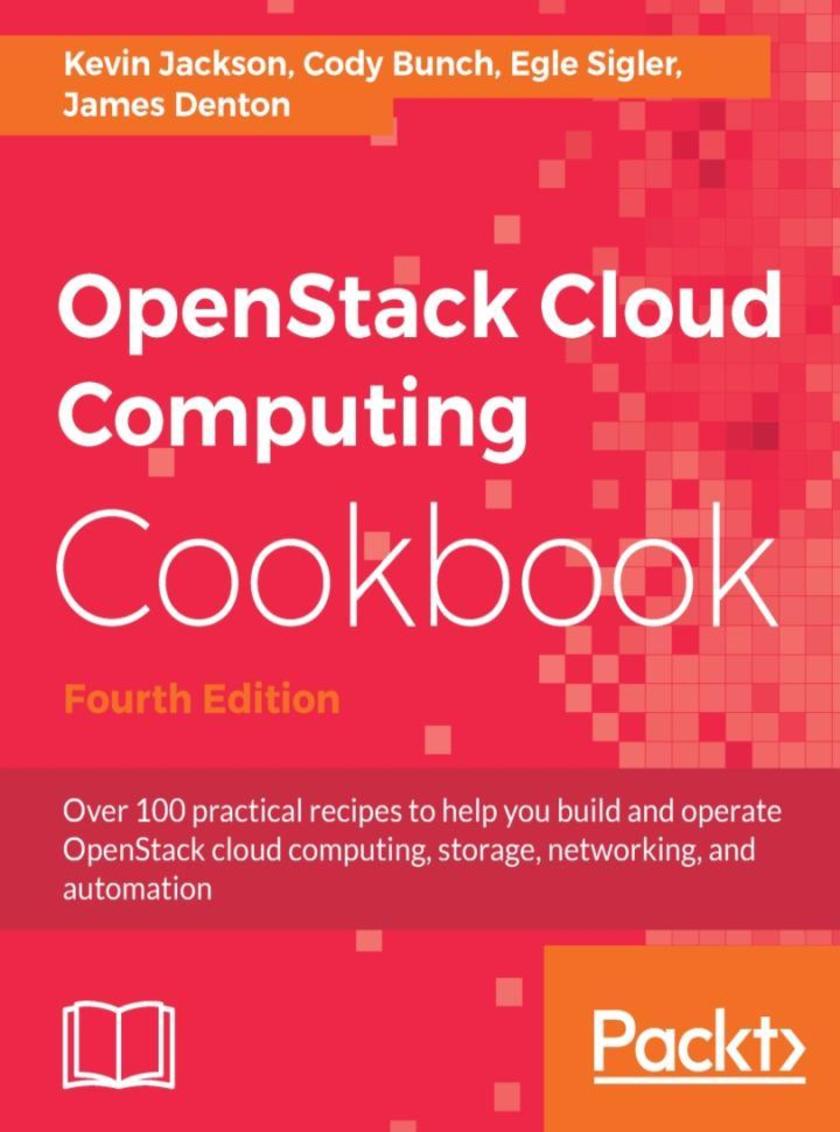
OpenStack Cloud Computing Cookbook - Fourth Edition
¥90.46
The Fourth Edition of the industry-acclaimed OpenStack Cloud Computing Cookbook, from four recognized experts, updated to the latest OpenStack build including Cinder, Nova, and Neutron. About This Book ? Over 100 recipes created by a team of OpenStack experts ? Updated to work with the latest OpenStack builds, with recipes covering the installation and use of OpenStack with Ansible ? It covers topics such as Keystone, Glance, Neutron, Nova, Cinder, and more, plus recipes for OpenStack storage, networking, and orchestrating workloads ? Test drive OpenStack using the accompanying Vagrant environment Who This Book Is For This book is written for cloud system engineers, system administrators, and technical architects who are moving from a virtualized environment to cloud environments. This book assumes that you are familiar with cloud computing platforms, and have knowledge of virtualization, networking, and managing Linux environments. What You Will Learn ? Understand, install, configure, and manage a complete OpenStack Cloud platform using OpenStack-Ansible ? Configure networks, routers, load balancers, and more with Neutron ? Use Keystone to setup domains, roles, groups and user access ? Learn how to use Swift and setup container access control lists ? Gain hands-on experience and familiarity with Horizon, the OpenStack Dashboard user interface ? Automate complete solutions with our recipes on Heat, the OpenStack Orchestration service as well as using Ansible to orchestrate application workloads ? Follow practical advice and examples to run OpenStack in production In Detail This is the fourth edition of the industry-acclaimed OpenStack Cloud Computing Cookbook, created by four recognized OpenStack experts. It has now been updated to work with the latest OpenStack builds, using tools and processes based on their collective and vast OpenStack experience. OpenStack Open Source Cloud software is one of the most used cloud infrastructures to support a wide variety of use cases, from software development to big data analysis. It is developed by a thriving community of individual developers from around the globe and backed by most of the leading players in the cloud space today. We make it simple to implement, massively scalable, and able to store a large pool of data and networking resources. OpenStack has a strong ecosystem that helps you provision your cloud storage needs. Add OpenStack's enterprise features to reduce the cost of your business. This book will begin by showing you the steps to build up an OpenStack private cloud environment using Ansible. You'll then discover the uses of cloud services such as the identity service, image service, and compute service. You'll dive into Neutron, the OpenStack Networking service, and get your hands dirty with configuring networks, routers, load balancers, and more. You’ll then gather more expert knowledge on OpenStack cloud computing by managing your cloud's security and migration. After that, we delve into OpenStack Object storage and you’ll see how to manage servers and work with objects, cluster, and storage functionalities. Finally, you will learn about OpenStack dashboard, Ansible, Keystone, and other interesting topics. Style and approach Clear, step-by-step instructions coupled with practical and applicable recipes that will enable you to use and implement the latest features of OpenStack. The authors provide all the context you need around each recipe so that you can make it part of your own OpenStack solutions.
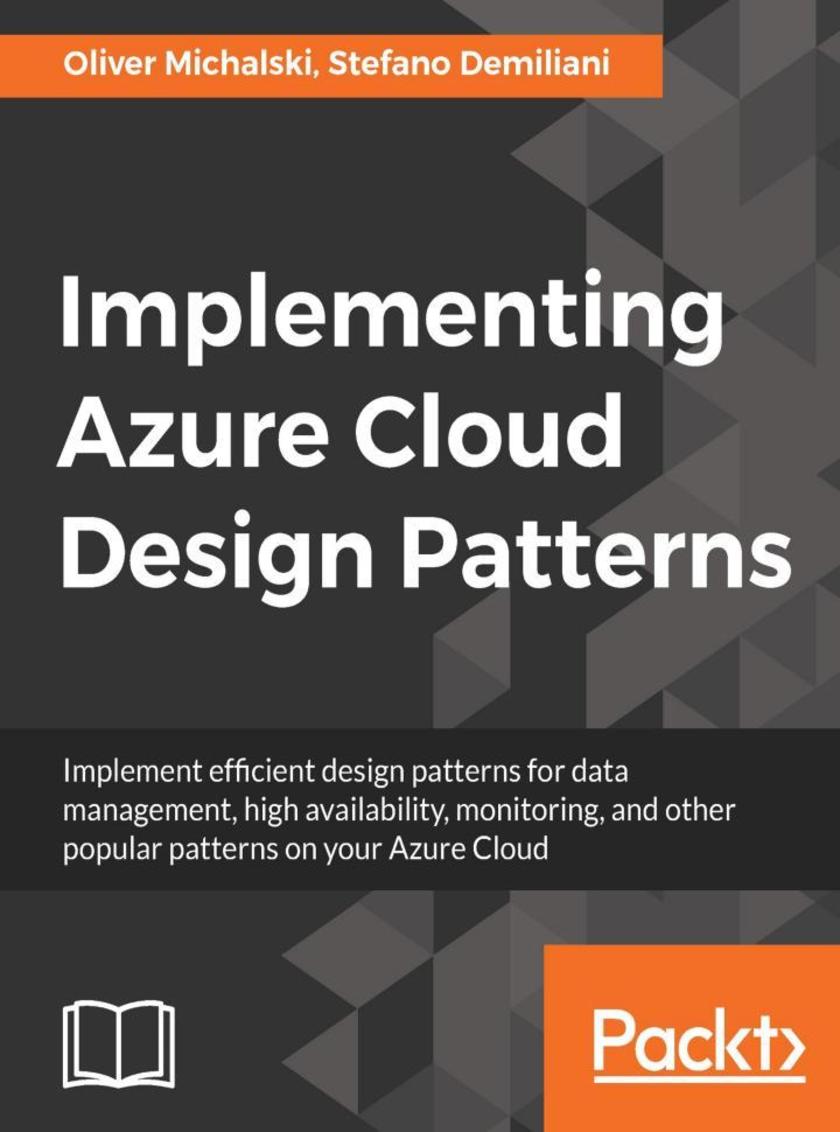
Implementing Azure Cloud Design Patterns
¥73.02
A hands-on guide to mastering Azure cloud design patterns and best practices. About This Book ? Master architectural design patterns in Azure. ? Get hands-on with implementing design patterns. ? Implement best practices for improving efficiency and security Who This Book Is For This book is targeted at cloud architects and cloud solution providers who are looking for an extensive guide to implementing different patterns for the deployment and maintenance of services in Microsoft Azure. Prior experience with Azure is required as the book is completely focused on design patterns. What You Will Learn ? Learn to organize Azure access ? Design the core areas of the Azure Execution Model ? Work with storage and data management ? Create a health endpoint monitoring pattern ? Automate early detection of anomalies ? Identify and secure Azure features In Detail A well designed cloud infrastructure covers factors such as consistency, maintenance, simplified administration and development, and reusability. Hence it is important to choose the right architectural pattern as it has a huge impact on the quality of cloud-hosted services. This book covers all Azure design patterns and functionalities to help you build your cloud infrastructure so it fits your system requirements. This book initially covers design patterns that are focused on factors such as availability and data management/monitoring. Then the focus shifts to complex design patterns such as multitasking, improving scalability, valet keys, and so on, with practical use cases. The book also supplies best practices to improve the security and performance of your cloud. By the end of this book, you will thoroughly be familiar with the different design and architectural patterns available with Windows Azure and capable of choosing the best pattern for your system. Style and approach This step-by-step guide will help you master Azure design patterns and functionalities and also supplies best practices towards the end of the book.

Learning Einstein Analytics
¥90.46
Learn to confidently setup and create app, lenses, dashboards using Salesforce Einstein Analytics. About This Book ? Explore Einstein analytics on desktop as well as mobile platforms ? Turn data into smarter sales with Einstein Analytics for Sales ? Visualize your data with preloaded as well as customized dashboards Who This Book Is For This book is for data scientists, business users, developers who want to explore business data using the Salesforce Einstein Analytics. Knowledge of the Salesforce platform is required. What You Will Learn ? Create app, lenses, and dashboards using Einstein. ? Visualize data utilizing all the widgets available with Einstein. ? Understand Einstein for Sales, Service, and Marketing separately. ? Use Data monitoring tools to monitor data flow and system jobs. ? Abstract machine learning constructs and make predictions on events In Detail Salesforce Einstein analytics aka Wave Analytics is a cloud-based platform which connects data from the multiple sources and explores it to uncover insights. It empowers sales reps, marketers, and analysts with the insights to make customer interactions smarter, without building mathematical models. You will learn to create app, lenses, dashboards and share dashboards with other users. This book starts off with explaining you fundamental concepts like lenses, step, measures and sets you up with Einstein Analytics platform. We then move on to creating an app and here you will learn to create datasets, dashboards and different ways to import data into Analytics. Moving on we look at Einstein for sales, services, and marketing individually. Here you will learn to manage your pipeline, understand important business drivers and visualize trends. You will also learn features related to data monitoring tools and embedding dashboards with lightning, visualforce page and mobile devices. Further, you will learn advanced features pertaining to recent advancements in Einstein which include machine learning constructs and getting predictions for events. By the end of this book, you will become proficient in the Einstein analytics, getting insights faster and understanding your customer in a better way. Style and approach The book takes a pragmatic approach showing you installation of Salesforce Einstein Analytics, predictive analysis and applications of AI.
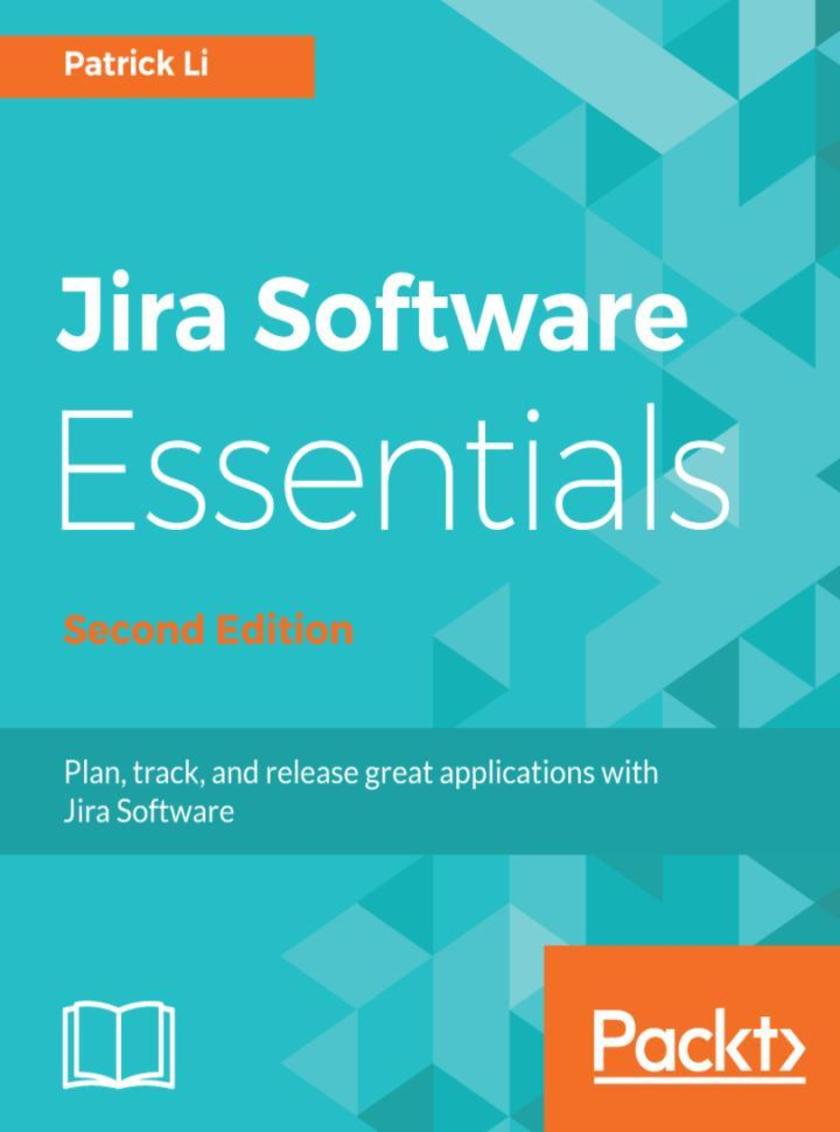
Jira Software Essentials - Second Edition
¥63.21
Explore Jira Software to manage your projects proficiently About This Book ? Plan and manage projects effortlessly with Jira Software by integrating it with other applications ? Improve your team's performance with Scrum and Kanban, together with agile methodology ? Easy-to-follow learning guide to install Jira Software and understand how it fits in with Atlassian Jira Who This Book Is For If you want to get started with Jira Software and learn how to run your Jira projects the agile way, then this is the perfect book for you. You will need to be familiar with the basics of Jira, both from an end user's and an administrator's perspective. Experience with workflows, custom fields, and other administrative functions of Jira will be useful. What You Will Learn ? Understand the basics and agile methodologies of Jira software ? Use Jira Software in a Scrum environment ? Manage and run Jira Software projects beyond the out of box Scrum and Kanban way ? Combine Scrum and Kanban and use other project management options beyond just agile ? Customize Jira Software’s various features and options as per your requirements ? Work with Jira Agile offline, and plan and forecast projects with agile portfolio ? Integrate Jira Agile with Confluence and Bitbucket In Detail Jira Software is an agile project management tool that supports any agile methodology, be it scrum, Kanban, or your own unique flavour. From agile boards to reports, you can plan, track, and manage all your agile software development projects from a single tool. Jira Software brings the power of agile methodology to Atlassian Jira. This second edition of JIRA Agile Essentials, will help you dive straight into the action, exploring critical agile terminologies and concepts in the context of Jira Software. You will learn how to plan, track, and release great software. This book will teach you how to install and run Jira Software and set it up to run with Scrum and Kanban. It will also teach you to use Jira Software your way and run projects beyond the out-of-box Scrum and Kanban way, including a hybrid approach of both the methodologies and other options that come with Jira Software. Later, you will learn how to integrate it with the tools you are already using and enhance Jira with add-ons such as Confluence. You will learn to stay connected with your team from anywhere to ensure great development. Jira Software has numerous deployment options in the cloud, on your own infrastructure, or at a massive scale. You will be introduced to Bitbucket, Atlassian’s distributed version control system, which integrates seamlessly with Jira, allowing your team to work within the two applications as one harmonious environment. With this practical guide, you will develop a great working knowledge of Jira Software and your project management will become much more efficient. Style and approach This practical book explains Jira Software with the help of detailed examples in a step-by- step manner.




 购物车
购物车 个人中心
个人中心



